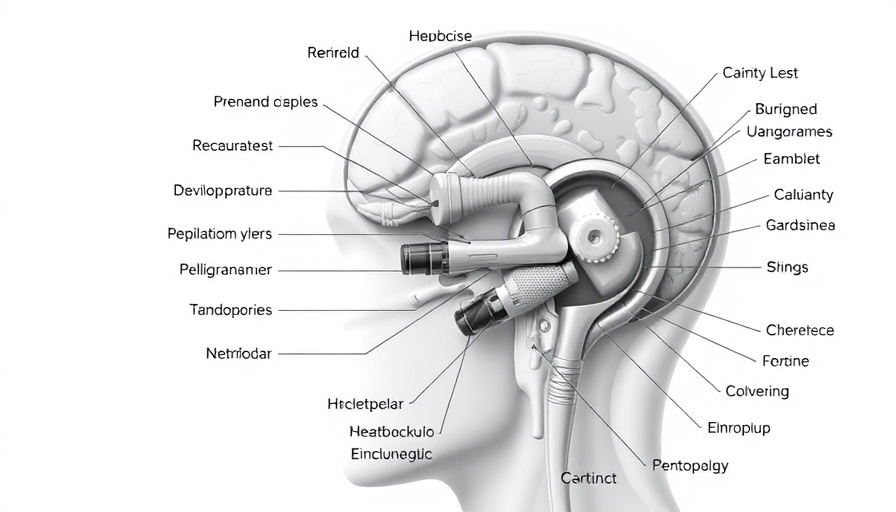
A New Era in Auditory Technology
In a world increasingly defined by technological advancement, the introduction of a promising auditory brainstem implant (ABI) marks a significant leap toward enhancing the quality of life for individuals suffering from profound hearing loss due to conditions such as Neurofibromatosis type 2 (NF2). This innovative implant, designed by a collaborative research team at Mass General Brigham and the École Polytechnique Fédérale de Lausanne (EPFL), is not just an incremental improvement but a fundamental shift in how auditory function can be restored.
Understanding the Science Behind Soft Designs
The exciting new prototype features a soft, flexible design that is specifically tailored to navigate the complex anatomy of the brain. Unlike conventional ABIs with rigid electrodes, which have produced only limited results and discomfort for patients, this new model conforms closely to the brainstem's surface. This flexibility allows for greater precision in auditory stimulation, a key factor in facilitating improved hearing outcomes.
The Importance of Preclinical Trials
The success of any new medical technology relies heavily on rigorous preclinical testing. In the recent study published in Nature Biomedical Engineering, two macaques were implanted with the innovative ABI, undergoing extensive behavioral tests that revealed their ability to distinguish different patterns of sound stimulation. This evidence suggests a heightened auditory perception and opens the door to the potential for less invasive and more effective treatments for human patients facing similar challenges.
Patient-Centric Benefits: What Does This Mean for the Future?
As the focus shifts toward soft technology in medical devices, the benefits become clearer. The new ABI not only aims to improve auditory function but also seeks to minimize side effects associated with traditional implants. With a focus on comfort and usability, the research team expresses optimism that future human trials will validate these preliminary results, providing new hope for patients whose hearing loss was previously deemed untreatable.
Counterarguments: Is Change Necessary?
While the promise of this technology is exciting, it is also crucial to consider counterarguments regarding the necessity of such advancements. Some may argue that current cochlear implants already serve a significant population of patients effectively. However, the nuanced needs of individuals with NF2 and other unique auditory conditions cannot be overlooked. The innovative ABI addresses an unmet need, thereby ensuring that advancements in medical technology benefit a broader spectrum of individuals.
Emotional Perspectives: The Human Element in Auditory Solutions
Imagine a child with NF2, growing up in a world filled with sounds yet unable to fully participate in the symphony of life. The introduction of a more effective auditory solution brings not only a technical advancement but an emotional uplift that resonates with families and communities. The journey from silent isolation to shared experiences is vital in understanding the human angle of such innovations.
Steps Forward: Preparing for Human Trials
The pathway from preclinical success to human application is filled with meticulous planning and regulatory hurdles. Researchers are now faced with the imperative task of preparing for clinical trials that will evaluate the ABI's effectiveness in human patients. These trials will not only confirm the safety and efficacy of the implant but also set the stage for establishing protocols that can integrate this technology into mainstream healthcare.
Concluding Thoughts: The Future of Hearing Restoration
As we look ahead, the landscape of auditory restoration continues to evolve. Innovations such as this soft ABI are crucial in redefining what is possible for individuals with profound hearing loss. Health professionals and technological innovators alike must collaborate to ensure these technologies reach those in need.
If you are in a decision-making capacity within a tech-driven or healthcare-oriented organization, consider how advancements like the auditory brainstem implant could reshape the future of patient care. Constant innovation is not merely an option but a necessity for improving health outcomes across various demographics.
 Add Row
Add Row  Add
Add 




 Add Row
Add Row  Add
Add 

Write A Comment